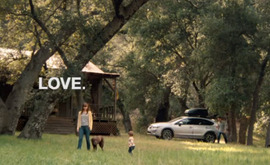Pricing Techniques That Will Get You More Sales in 2014

When it comes to a retail pricing strategy, there are several pricing tricks that have proven influential in inducing the customer to buy. The best thing about techniques I'm about to discuss is that they are not complicated and have been rigorously tested and documented through psychology research performed at the Wharton Business School and Stanford Grad School of Business.
And they've been proven to work. Start your 2014 retail strategy off right with these six positive pricing tips and techniques:
Keep Prices Simple
Researchers found that the more syllables a customer reads in a price, the more expensive that product appears to the customer. For example, $1499 sounds much simpler, and thus seems much lower in cost than $1,499 or $1,499.00. Despite the fact that these prices are the same, the extra syllables (and commas) make it feel and sound like a higher cost.
Use the Magic Number "9" In Prices
Items priced with a "9" at the end, like $12.99, cost less in the buyer's mind. Vicki Morwitz, Research Professor of Marketing at the Stern School of Business at New York University and president of The Society for Consumer Psychology, explains that this is because of the "left-digit effect" of people reading numbers left to right. For instance, a person processes a price like $9.99 as just $9.
And research backs it up; prices ending with the number 9 outsell lower-priced goods. For example, in the study, an item priced at $39 outsold item marked at $34 by 24%.
Offer More Package-Price Choices
Research has shown that when you offer three choices, like regular, premium, and super premium, you will get more people buying the premium – and even some buying the super premium – rather than going for the lowest price. The catch is that they have to see it in context with other price choices, and not just a choice between the highest and the lowest.
Customers do this because they are willing to pay a higher price for a premium (better) experience.
Don't Bash Competitors
Sometimes it's tempting to advertise, "Did you know that competitor's name charges 10% more for this item?" But don't do it. Research has shown that asking customers to compare something makes them suspicious, and decreases their trust and confidence in you.

This Subaru commercial follows a young man over the course of many changes in his life, his trusty Subaru and canine companion with him every mile of the way.

Frame Your Product's Value Wisely
The same price – reframed – can make it sound like a better buy. For instance, "$84 per month" sounds so much better than "$1000 per year" even though those two price points are essentially the same amount.
Adding a descriptive word before a price also encourages the consumer to buy. For example, saying “a small $5 fee” instead of "a $5 fee" increased the response rate by 20%, according to this study from Wharton Business School.
Frame the Product in Memories
A person's experience with a product tends to foster feelings of personal connection with it. Try to evoke memories to bring more positive reactions about a product, like the Subaru commercial.
For example, "Remember the time we bought our first car?" You're not really talking about the price of the car, but instead, the psychological value it evokes through your memories. You're not really talking about your need to have wheels, but how it makes you feel.
Bottom Line For Your Bottom Line:
These are great ideas that most retailers are able to employ without too much effort, but for increased sales and profits. And, although these are great pricing "strategies," make sure that providing your customer a genuine experience is always the most important focus.
 Written by
Written by